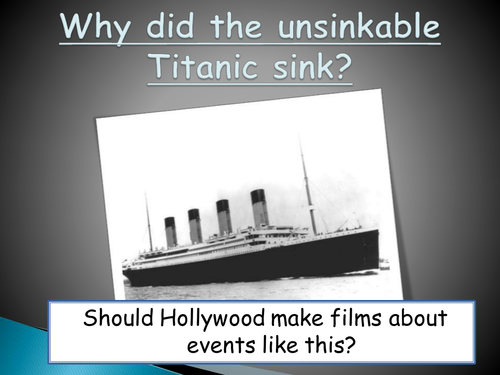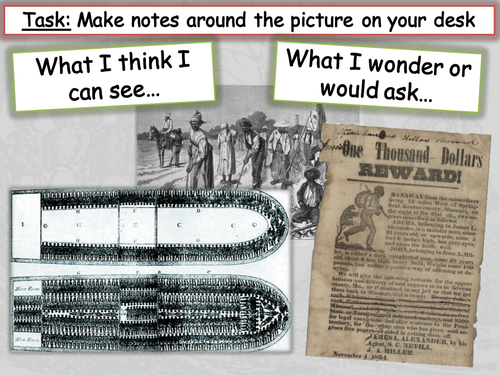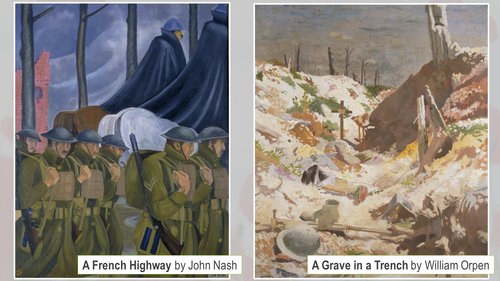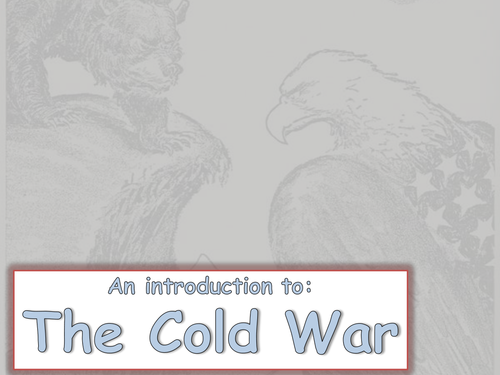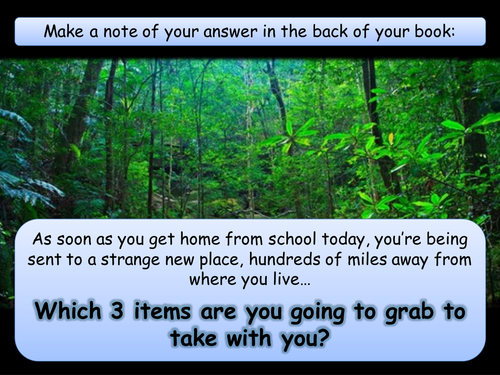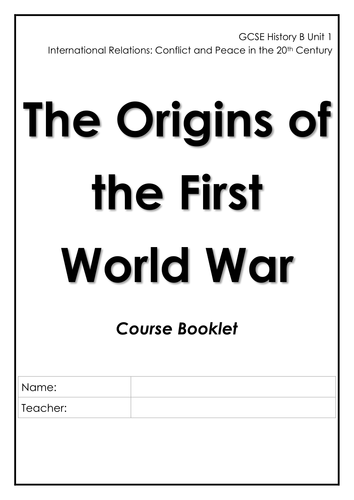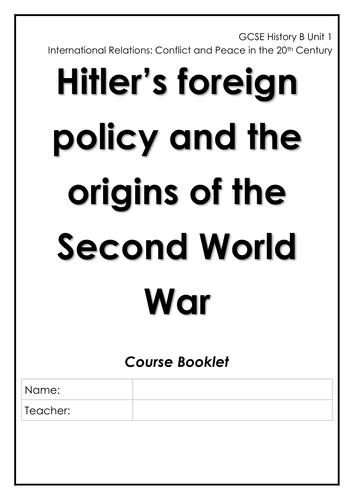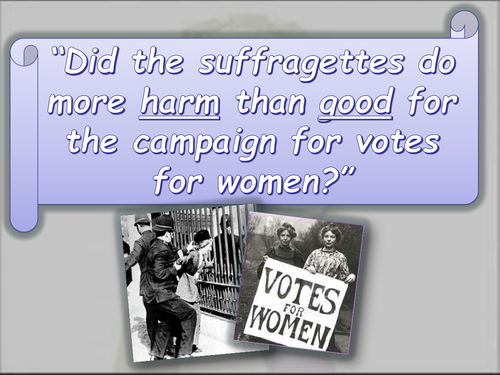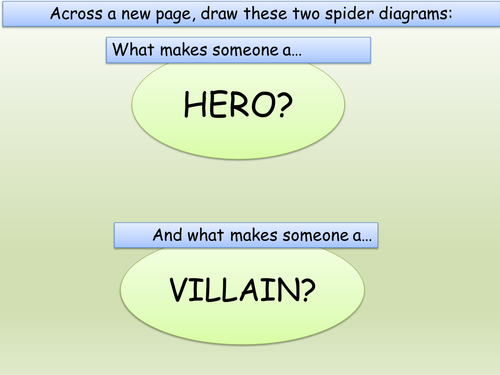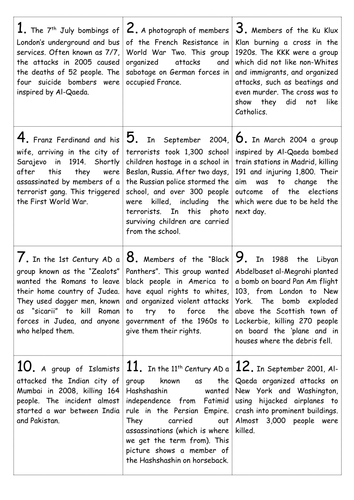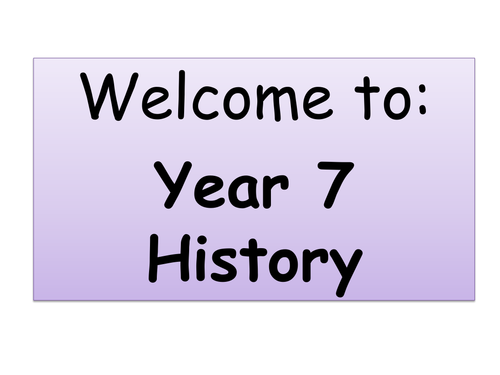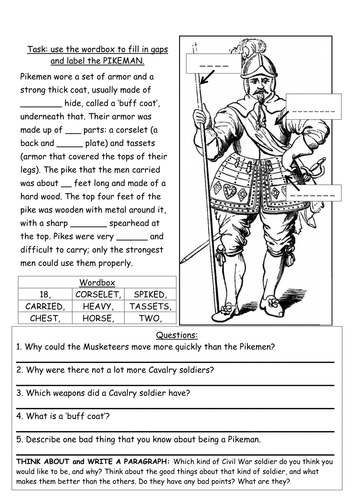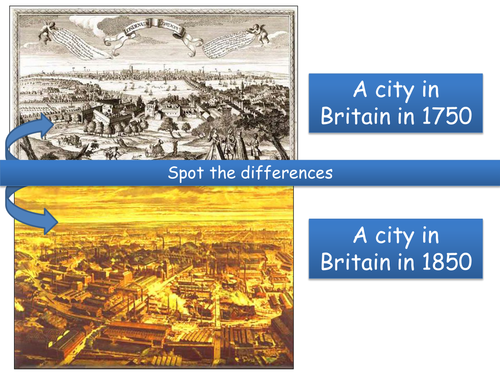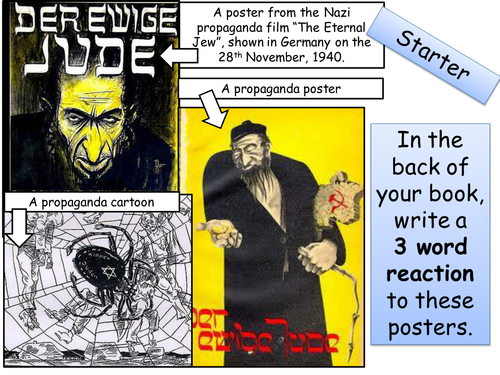
44Uploads
171k+Views
803k+Downloads
History

The Titanic Disaster - who was to blame?
A Ppt that covers potentially 4+ lessons on the Titanic disaster, building towards an assessment. Ppt includes an introduction to the Titanic, background activity, an analysis of James Cameron's version of the sinking (which will require clips from the film to be shown) and leads students to make their own decision about who was ultimately to blame for the disaster and loss of life. This short topic could end with an assessed piece of writing in which students make their own decision about assigning blame (an introduction to the assessment and differentiated writing frames are included).

Britain since 1945
4 lessons for the mini-topic "Britain since 1945". Would suit higher ability year 9, 10 or 11 or could be used as a straight forward introduction to AS Level. Lesson 1 focuses on the fall of the Conservatives after WW1. Students gather information and rank the reasons they believed caused the post-WW1 decline of the Tory party. Lesson 2 aims to enable students to investigate the rise of the Labour party and the establishment of the Welfare State, as students will have to work together to extract information and support eachother. Lesson 3 mirrors lesson 1 and gives focus to the fall of the Labour Party, Clement Atlee's role and the years of Conservative power that followed, with an independent work sheet and the analysis of a cartoon. Lesson 4 recaps lesson 3, and the gives focus to the shift in teenage subcultures in the 1950s and 60s. Information gathering and potential to lead to interesting discussions of teenage subcultures today. Includes an optional homework to finish the unit.

GCSE History B Unit 1 - Peacemaking 1918–1919 and the League of Nations - whole topic
A series of 11 lessons covering the 'Peacemaking 1918–1919 and the League of Nations' section of Unit 1.
I have split the lessons into three presentations, with PPT 1 covering the Treaty of Versailles, the aims and reactions of the 'big 3', the international reaction, PPT 2 covering the weakness of the Treaty, the formation of the League of Nations and its weaknesses, and finally PPT 3 covers the two international crises that crippled the LON and ends with a revision lesson, AFL of how to answer GCSE History questions and an assessment (a 4, 6 and 10 mark question on this topic).
I have uploaded the booklet to accompany this topic in my free uploads, which is what the page numbers mentioned throughout the presentations relates to. I have found that students find having a booklet to annotate and keep notes in has been invaluable.

Slavery Mythbusters History lesson
A lesson that could be used at the start or end of a Slavery topic in History. Lesson aims to challenge student misconceptions about slavery and emphasises the importance of challenging accepted 'myths' that people tend to believe. Extension activity included in the Ppt (not on the lesson plan) challenges students to write a paragraph justifying their view about whether 'myths about slavery hold any truth', with National Curriculum Levels and potential for Peer Assessment.

Paintings of the Trenches of WWI - Remembrance Day display/assembly
Very simple PPT (auto circulating slides) of 22 paintings by British, French and German artists - depicting the trenches of WWI. This was used as a background to a Remembrance Day assembly, and shown (circulating) during the History HOD's description of trench warfare. The final slide was frozen and displayed during the silence.

Introduction to the Cold War - 20 minute interview lesson
A 20 minute lesson designed for impressing an interview class, it keeps students focussed and puts the onus on them to take responsibility for introducing themselves to this important topic. This lesson would work as an introduction to the topic of the 'Cold War'. The starter activity is layers of inference around Bruce Russell’s 1945 cartoon, “Time to bridge the Gulch”. The main task is a 'Find someone who...' activity, which promotes literacy, individual and group work, and ensures that all students take responsibility for their learning and the learning of others. The extension task is included on the worksheet and in the lesson plan, and plenary task rounds back to the starter cartoon and any new comments or questions students may have.

Evacuation during WWII - perfect for cover
Lesson could form part of the study of the Home Front during WWII, with focus on the topic of Evacuation and the experience of three evacuees. Simple introduction to the reasons behind evacuation with an accessible main activity that focuses on literacy and independent working. Would be perfect for a cover lesson, and the A3 sheet has two creative extension activities on the back. The Ppt also contains a link to a video of inner-city London Primary school students reading the letters of evacuee children of matching ages, which could prompt a discussion about how young people in our society would cope (better or worse?) with evacuation. Extension letter writing activity is also included on Ppt.

Booklet for students: Peacemaking 1918–1919 and the League of Nations
Booklet to accompany lessons on GCSE Unit 1, Topic 2: Peacemaking 1918–1919 and the League of Nations.

Booklet for students: Origins of the First World War - GCSE Unit 1, Topic 1
Booklet to accompany lessons on GCSE Unit 1, Topic 1: The Origins of the First World War.
(I have also included a tick sheet that students could pop into their folders at the start/end of this topic, which lists the content they have covered and gives them space to colour in or tick the boxes - could be useful for a revision lesson before an assessment?)

Booklet for students: Hitler’s foreign policy/Origins of the Second World War - GCSE Unit 1, Topic 3
Useful booklet to accompany lessons on the 'Hitler’s foreign policy and the origins of the Second World War' topic. Hope it comes in useful, and if you're using this along with some of the other booklets I have uploaded - I would suggest you get it printed in a different colour of paper!

Worst Jobs in History generic table to accompany video
Generic and adaptable table that can used alongside any episode of Tony Robinson's "Worst Jobs in History" series. Used with a low ability year 7 class and did require pausing the video to write job titles onto the whiteboard. Students enjoyed thinking carefully and making decisions about what may have been not so unpleasant about particular jobs, and how good it might have been to have even had a job at some points in History.

Did the Suffragettes do more harm than good? 25 minute interview lesson
Powerpoint, accompanying worksheet for students to complete, evidence packs and a lesson plan for a 25 minute lesson for a mixed ability year 10 class, at the start of the their British History depth study. The class had not previously studied the suffrage movement, so this was intended to be an overview of the actions of the Suffragettes, the Suffragists and the actions of women during WWI, and was intended to help students to make an initial decision about which action was the most effective in women gaining the vote. For the lesson, I glued the evidence packs onto sugar paper and had students move round the packs of evidence after 5mins. I glued source C onto the back of the paper, as the intention was to use that source to challenge the most able students, encouraging them to analyse its provenance as well as its content.

Oliver Cromwell - News report and assessment
Lesson that could follow trial and execution of King Charles I. Students are given a straight forward introduction to your main man Cromwell, they then work in groups to produce a drama (with their own scripts) of a breaking news story about Oliver Cromwell's actions. Students will need time to read the information they have been given, decide on roles, write scripts and rehearse. Students then watch eachother's reports and fill in an observer form. This could lead to an assessed piece of writing, debating on whether Cromwell was a hero or a villain when he ruled England.

The worst jobs in History - Tudor Times
Lesson that accompanies Tony Robinson's "Worst Jobs in History - Tudor Times" video (available in 6 parts on youtube). The table can be completed by students during the video or they can gather the information afterwards (ppt slides would therefore need to be printed and passed around or put around the classroom). Extension activity on the back of the table and whole class vote and justification as plenary.

Terrorism through time (Roman and Tudor)
Lesson that works well at the start of an investigation into Terrorism, and would be well suited for higher ability students. The'cut and stick' starter could be done in pairs or groups, and could be extended into creating a tension graph and comparing this with other pairs/groups, which could open into a debate. Extension activities to stretch and challenge on the back of the worksheet.

First lesson of Secondary History
A 4 lesson mini-scheme, which could be used as an introduction to History for year 7 students - or for you, if you haven't taught History before! Lessons 1 and 2 give focus to Chronology skills and the importance of Chronology to Historians. Lesson 3 trains students to enquire into sources and evidence, and there is an optional homework task (which could help you to get to know students) included. Lesson 4 is a rapid fire tour through accuracy, reliability, facts, opinion and bias.

Child Labor during the Industrial Revolution, a mythbreaking enquiry
An enquiry lesson on the topic of child labour in factories of the Industrial Revolution. The investigation should encourage students to question their assumptions about the role of children in the I.Rev. To create the information stations, print out slides 10 - 15.

Soldiers and battles of the English Civil War
Lesson 1 is a straight forward introduction to the different types of soldiers who fought at the Battles of the ECW, and students complete information sheets and make judgements about the strengths and weaknesses of the soldiers. It could follow on from an introduction lesson about the causes of the ECW, although the starter sets up the idea of opposing factions and views.Lesson 2 is a group working lesson, designed to encourage students to teach eachother about the major battles of the ECW. This worked with a low/mixed ability year 8 class with support, and I have included a differentiated log sheet. Careful grouping would help students to support one another. An extension of completing a tension graph on the back of the log sheet is an option for more able students.

Industrial Revolution, towns of the Industrial Revolution and the spread of Cholera
Series of 5 lessons (could take a little longer) on the topic of the Industrial Revolution. Lessons 1 and 2 are a simple and very visual introduction to the I.Rev, using a clip from the London 2012 Olympic opening ceremony. An optional homework is included in this lesson (included at the end of the resources), although it is all about how the North of England was revolutionised! It could be easily adapted though. Lesson 3 delves into the problems that were caused by workers flocking to the cities from the countryside, and gives focus to group work and a map from memory. Lesson 4 is an excellent murder mystery investigation - which was originally from TES resources and I have only adapted and souped it up a bit. Students love coming up with wild theories and enjoy being repulsed by the "Mystery source" (Water from the Broad st. pump - actually a jar of water with gravy granules in it, looks revolting). Lesson 5/5.5 is an assessment, with preparation and AFL for students.

Persecution and dehumanization of the Jewish race in Nazi Germany
Introductory lessons to the persecution and dehumanisation of the Jewish race in Nazi Germany, with a card sort of laws restricting the rights of Jewish people, and lesson 2 covers the boycott of Jewish shops, Kristallnacht and ghettoisation. When I use these lessons, I tend to finish lesson 2/start a third lesson with the first 30-40mins of Roman Polanski's "The Pianist", although with a disclaimer to students that some scenes are distressing.

